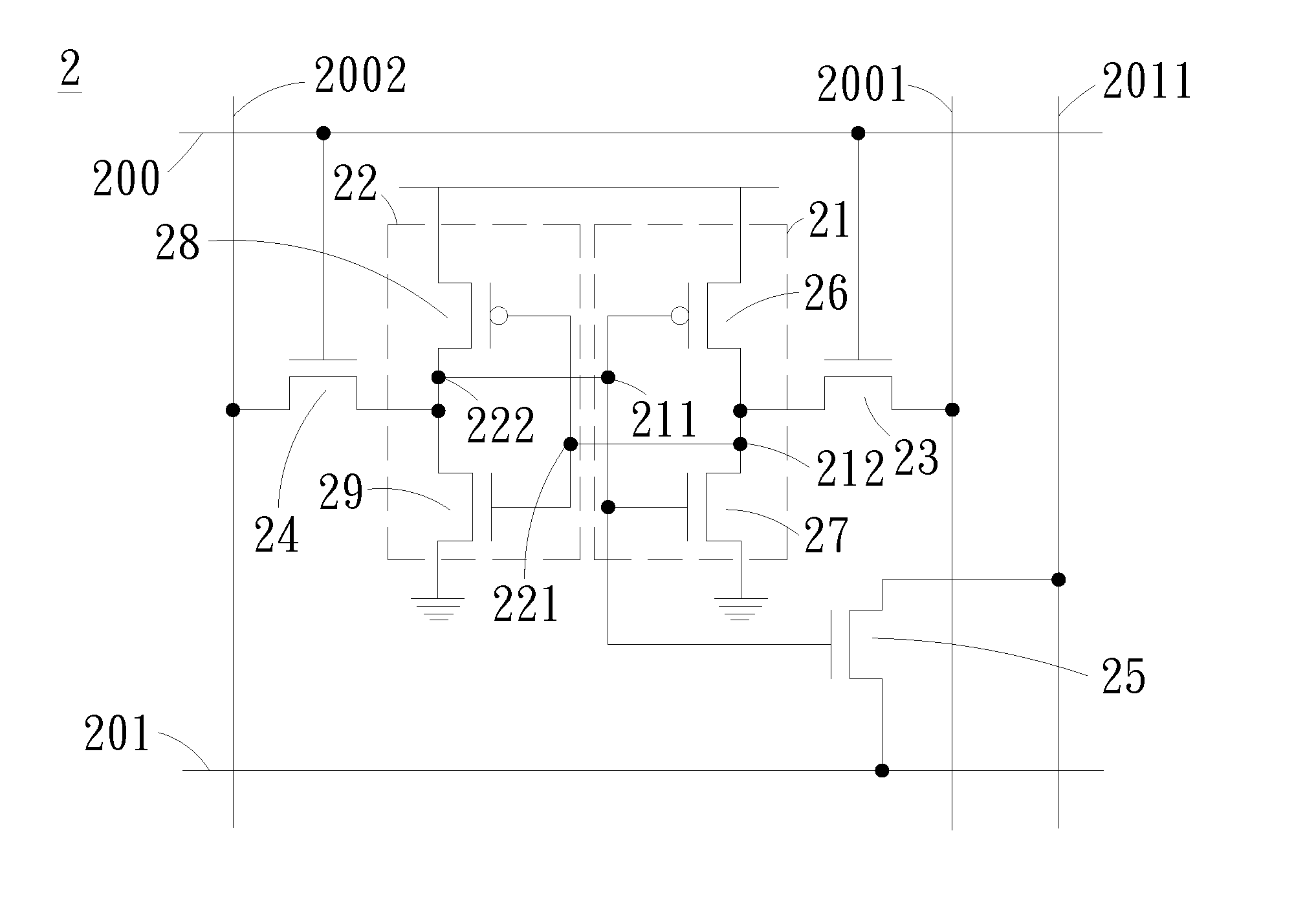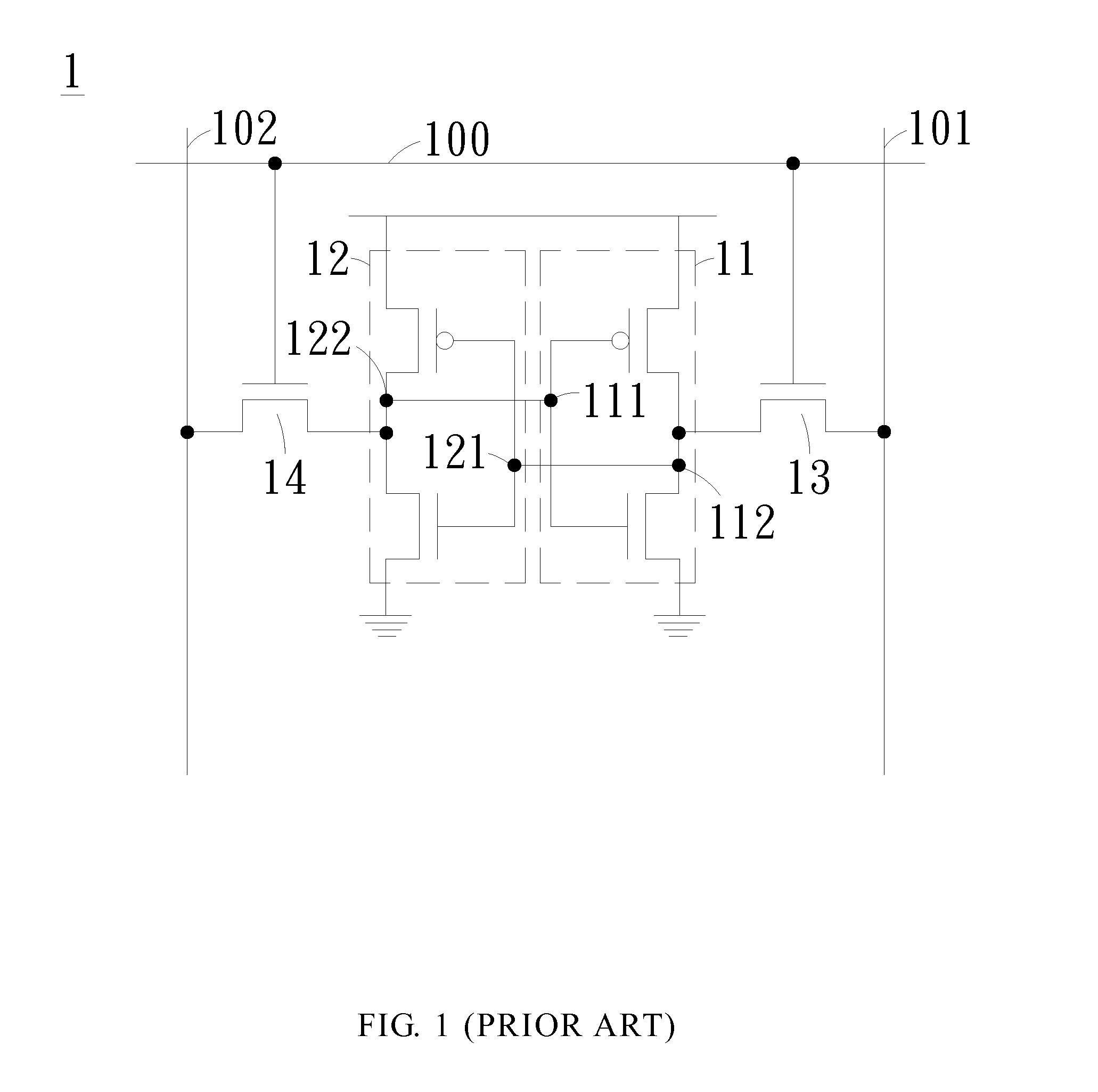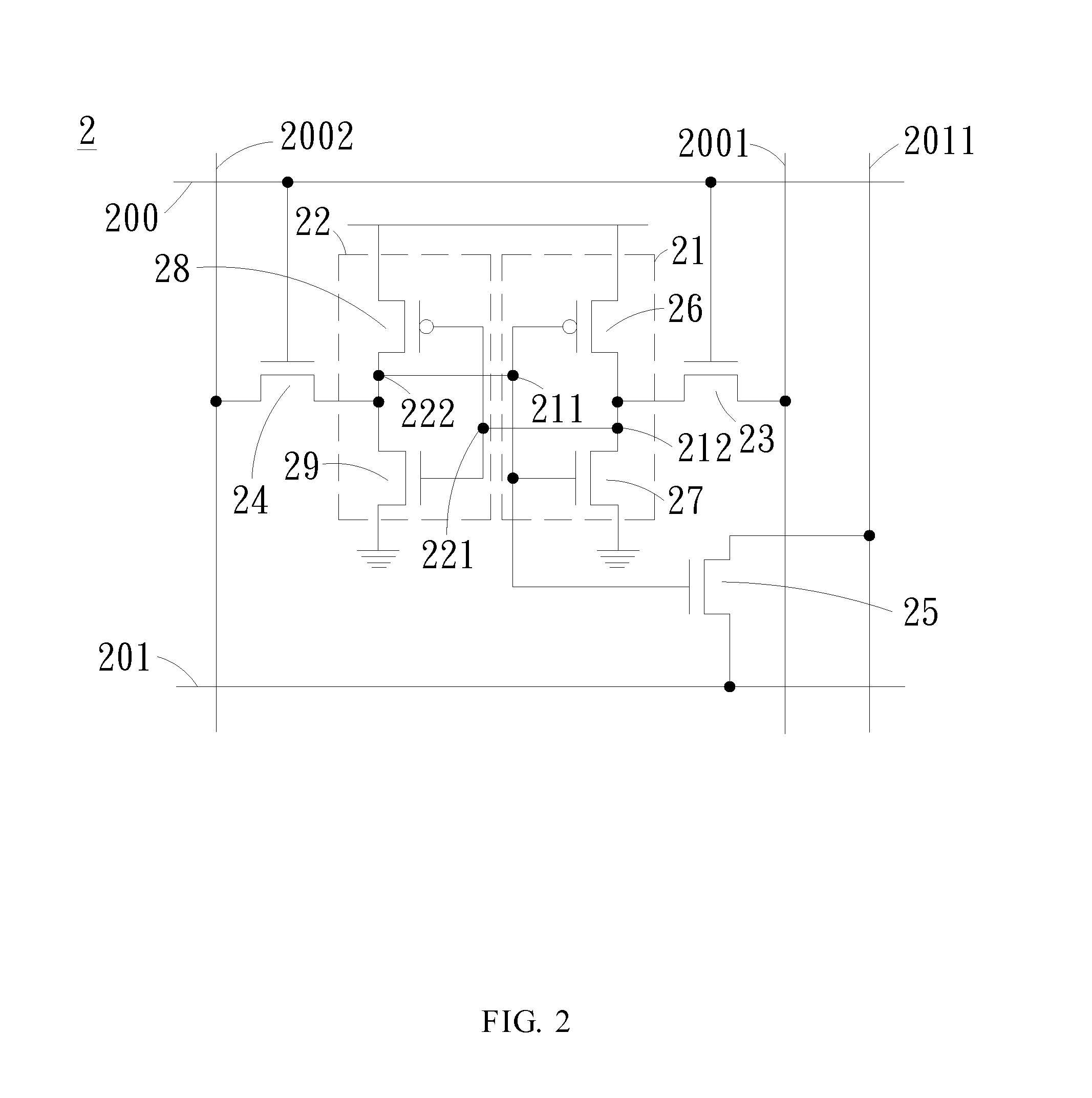Static Random Access Memory Cell
a random access memory and random access technology, applied in the field of static random access memory cells, can solve the problems of unselected data being turned, current leakage, and the integrated circuit design of the eight-transistor static random access memory cell incurs a higher complexity, so as to reduce the complexity of the integrated circuit design, increase the read bit line swing, and improve the accuracy of reading data. the effect of accuracy
- Summary
- Abstract
- Description
- Claims
- Application Information
AI Technical Summary
Benefits of technology
Problems solved by technology
Method used
Image
Examples
Embodiment Construction
[0027]The technical characteristics and effects of the present invention will become apparent by the detailed description of preferred embodiments and related drawings as follows. For simplicity, same numerals are used to represent respective elements in the preferred embodiment and drawings.
[0028]With reference to FIG. 2 for a schematic view of a SRAM cell in accordance with the first preferred embodiment of the present invention, the SRAM cell is a seven-transistor SRAM cell 2 comprising a first inverter 21, a second inverter 22, a first transistor 23, a second transistor 24 and a third transistor 25. The first inverter 21 includes a first input node 211 and a first output node 212, and the second inverter 22 includes a second input node 221 and a second output node 222. The first inverter 21 and the second inverter 22 are cross-coupled. In other words, the first output node 212 is coupled to the second input node 221, and the second output node 222 is coupled to the first input n...
PUM
 Login to View More
Login to View More Abstract
Description
Claims
Application Information
 Login to View More
Login to View More - R&D
- Intellectual Property
- Life Sciences
- Materials
- Tech Scout
- Unparalleled Data Quality
- Higher Quality Content
- 60% Fewer Hallucinations
Browse by: Latest US Patents, China's latest patents, Technical Efficacy Thesaurus, Application Domain, Technology Topic, Popular Technical Reports.
© 2025 PatSnap. All rights reserved.Legal|Privacy policy|Modern Slavery Act Transparency Statement|Sitemap|About US| Contact US: help@patsnap.com



